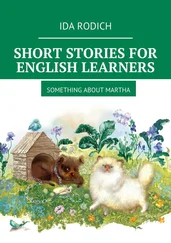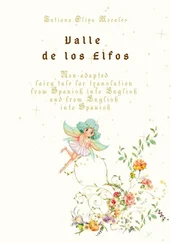Louis de Bernieres - Notwithstanding - Stories from an English Village
Здесь есть возможность читать онлайн «Louis de Bernieres - Notwithstanding - Stories from an English Village» весь текст электронной книги совершенно бесплатно (целиком полную версию без сокращений). В некоторых случаях можно слушать аудио, скачать через торрент в формате fb2 и присутствует краткое содержание. Год выпуска: 2010, Издательство: Vintage, Жанр: Современная проза, на английском языке. Описание произведения, (предисловие) а так же отзывы посетителей доступны на портале библиотеки ЛибКат.
- Название:Notwithstanding: Stories from an English Village
- Автор:
- Издательство:Vintage
- Жанр:
- Год:2010
- ISBN:нет данных
- Рейтинг книги:4 / 5. Голосов: 1
-
Избранное:Добавить в избранное
- Отзывы:
-
Ваша оценка:
- 80
- 1
- 2
- 3
- 4
- 5
Notwithstanding: Stories from an English Village: краткое содержание, описание и аннотация
Предлагаем к чтению аннотацию, описание, краткое содержание или предисловие (зависит от того, что написал сам автор книги «Notwithstanding: Stories from an English Village»). Если вы не нашли необходимую информацию о книге — напишите в комментариях, мы постараемся отыскать её.
is a funny and moving depiction of a charming vanished England.
Notwithstanding: Stories from an English Village — читать онлайн бесплатно полную книгу (весь текст) целиком
Ниже представлен текст книги, разбитый по страницам. Система сохранения места последней прочитанной страницы, позволяет с удобством читать онлайн бесплатно книгу «Notwithstanding: Stories from an English Village», без необходимости каждый раз заново искать на чём Вы остановились. Поставьте закладку, и сможете в любой момент перейти на страницу, на которой закончили чтение.
Интервал:
Закладка:
His new house was named Mole End Cottage, and with good reason. When the estate agent from Messenger May Baverstock had pointed out to him that because the house backed on to a large meadow, there was a problem with moles in the garden, he had not been particularly concerned. He had no plans to play croquet, and it occurred to him that soil from molehills might be ideal as a potting medium. He looked benevolently upon the three dozen heaps of upturned earth, and reflected that one could live with moles easily enough. ‘Live and let live, that’s what I say,’ he repeated to himself whenever the topic popped into his mind.
Out in the garden Royston Chittock trimmed the hedges neatly, installed edging to the beds, created a modest rockery, spread pea shingle on the paths and planted a miniature ornamental cherry. He put a small bird table in front of the kitchen window, and a bird bath in the middle of the flower bed. The lawn he left to the moles, until winter had passed, and the difficulty of mowing it began to irritate him.
The fact was that you couldn’t mow unless you flattened the molehills by spreading them around, in which case you ended up with squashed muddy discs, or you shovelled the spoil into a barrow and dumped it elsewhere. Royston Chittock chose the latter course, reasoning that he could use it all on the rose beds.
He had bought a second-hand Suffolk Punch cylinder mower in good condition, and with this trusty machine he created immaculate stripes up and down the lawn. On one weekend he would mow lateral stripes, and on the next he would mow longitudinal ones. It all looked very smart, until, on following mornings he would look out of his bedroom window and see new heaps of soil dotted evenly all over its surface. He could live with it, he decided. Yes, of course, he really could live with it. Live and let live.
He noticed when mowing that if the ground was the slightest bit damp, his feet would quite often sink into the surface. He would fetch soil from the rose bed to pack into the little declivity. Once or twice he nearly sprained an ankle. ‘Bloody moles,’ he began to say to himself, but of course he could live with them really.
Within a year Royston Chittock had succeeded in becoming a member of the West Surrey Golf Club, because an unusually large number of elderly members had recently been translated to the Great Nineteenth Hole in the Sky, and he had managed to get himself proposed by a member from whom he had bought a collection of stamps from British Guiana for a deliberately overgenerous sum.
The problem with golf, of course, is that it very quickly becomes an obsession. One is inevitably hooked from the first moment that one does a beautiful drive straight up the middle of the fairway, or sinks a twenty-five-foot putt on a roller-coaster green. Mr Chittock was not exactly a beginner, since he had trifled with the game for years, as a necessary part of his business life, but this course was very different from the overcrowded ones in the orbit of London. It was old, the holes were long and well thought out, it was heavily wooded, there were not too many people on it, and above all it was a course that required some intelligence and subtlety from the player. It was the ideal course for someone such as himself, thought Royston Chittock.
The first hole sloped gently upward, and had an interesting ridge across the middle. The second was a par three with an elevated green surrounded by bunkers. It was on this hole, on his first round of golf as a full member, that Mr Chittock lofted a beautiful shot into the air, saw it describe an aesthetically perfect arc, saw it descend elegantly and discreetly, saw it run as if with intent, saw it strike the flagpole, skip into the air, hover a moment and descend into the hole.
A hole-in-one; Chittock was almost too thrilled to play on. Even so, he managed five pars and two birdies thereafter, and his head began to buzz with the notion of entering and winning tournaments. He was sure he could do it, even though he had scored ten on the sixth hole because of slicing into trees, heavy rough and a bunker, and then doing three putts.
When he got home Chittock wrapped his ace golf ball in a duster and placed it reverently in his sock drawer. He took it out several times a day to caress it and sniff its lovely aroma of gutta-percha. Because he now could not stop thinking about golf, he mitigated the resultant insomnia by taking the sacred ball to bed with him. He would never actually use it again, because of its totemic power. From its nest in the sock drawer it would emanate concentric success-waves that Chittock felt he could pick up on his internal antennae as he played.
He had to all intents and purposes discovered the meaning of life, or at least the meaning of his own. He played all day, every day, even using a red ball in the snow, once scoring an eagle on a par five because the ball skidded for miles on a patch of ice, and ended up two feet from the hole on a temporary green.
It inevitably occurs to golfers that it might be a good idea to practise their putting at home. They begin on the carpet in the drawing room or the hallway, but of course the ball goes too fast, so that when they get to the course they find that their putts stop short. Then they try the lawn, and realise that the grass is too coarse, so that when they get to a real green, they hit the ball a long way past the cup.
The old professional at Wentworth, Tom Haliburton, used to say that one drives for pleasure and putts for money. Royston Chittock knew very well that matches are won on the green and not on the tee, and he was interested in winning every club competition that he could, so he kept his handicap artificially high, and decided to dedicate himself to the study of putting. Like so many golfers before him, Royston Chittock decided that the only solution was to make a proper green on his own lawn, one that could be kept closely mown, and weeded and rolled. Fortunately one of the greenkeepers who worked at the West Surrey lived in Cherryhurst, the row of council houses near the Institute of Oceanography. His name was Dick, he talked like a Londoner, and he lived with young Robert’s mother. Robert referred to him as ‘Uncle Dick’, but most people were fairly certain that he wasn’t that kind of uncle.
For a very substantial sum Mr Chittock engaged Uncle Dick to make him a putting green in his spare time, and so it was that one afternoon he came round to Mole End Cottage in his black Ford Prefect in order to survey the garden and work out the best plan for a green.
‘You’ll have to get rid of these moles, squire,’ said Dick, as they walked the grass. ‘They’ll make a right mess of everything if you don’t. Wouldn’t even be worth starting.’
‘Is that difficult?’ asked Mr Chittock.
‘It can take bleedin’ years,’ said Uncle Dick. ‘The buggers keep coming back. You kill one batch of them, and that just makes accommodation for some more little buggers to move in. Drives you barmy. Best bet would be to get the moleman.’
‘Is it difficult? I mean to get rid of them oneself?’
‘You can get the traps in Scats,’ said Uncle Dick. ‘You get three of them, and I’ll show you how to do it.’
Accordingly, Royston Chittock went to Scats, a great barn of a place on the outskirts of Godalming, where one could wonder at and acquire all sorts of implements and contraptions whose uses were known only to farmers and those who kept horses. Unable to identify a mole trap, Mr Chittock enlisted the help of a comely seventeen-year-old assistant with the kind of thighs that could make a shire horse wince.
He came away with three gadgets that worked like doubled scissors on springs, with a sort of a tongue on a chain that would release the jaws of the trap if a mole moved it. In his kitchen at home, Royston Chittock discovered quite soon that the tongue also caused the trap to snap sharply and painfully shut if one poked it with an enquiring finger.
Читать дальшеИнтервал:
Закладка:
Похожие книги на «Notwithstanding: Stories from an English Village»
Представляем Вашему вниманию похожие книги на «Notwithstanding: Stories from an English Village» списком для выбора. Мы отобрали схожую по названию и смыслу литературу в надежде предоставить читателям больше вариантов отыскать новые, интересные, ещё непрочитанные произведения.
Обсуждение, отзывы о книге «Notwithstanding: Stories from an English Village» и просто собственные мнения читателей. Оставьте ваши комментарии, напишите, что Вы думаете о произведении, его смысле или главных героях. Укажите что конкретно понравилось, а что нет, и почему Вы так считаете.












